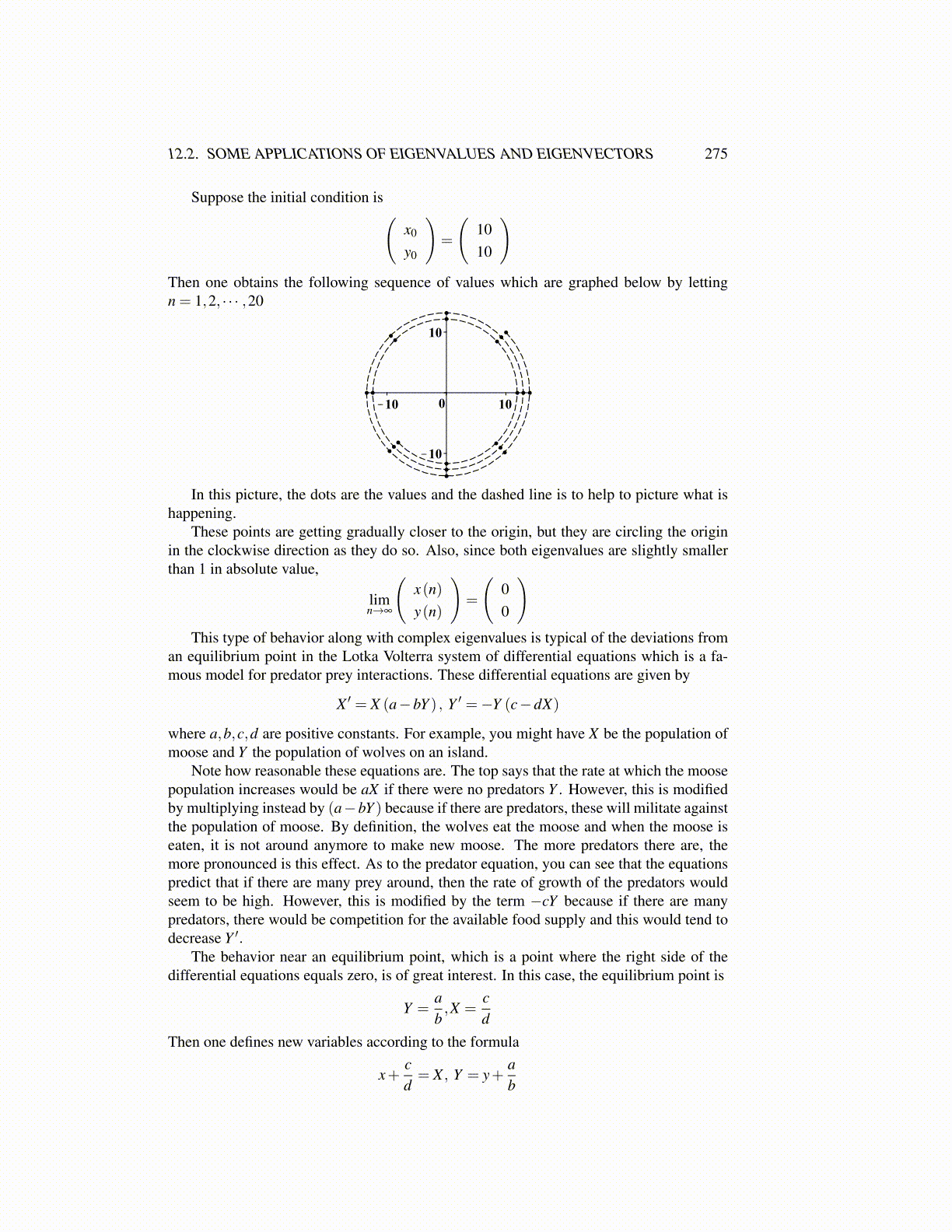
12.2. SOME APPLICATIONS OF EIGENVALUES AND EIGENVECTORS 275
Suppose the initial condition is(x0
y0
)=
(1010
)Then one obtains the following sequence of values which are graphed below by lettingn = 1,2, · · · ,20
In this picture, the dots are the values and the dashed line is to help to picture what ishappening.
These points are getting gradually closer to the origin, but they are circling the originin the clockwise direction as they do so. Also, since both eigenvalues are slightly smallerthan 1 in absolute value,
limn→∞
(x(n)y(n)
)=
(00
)This type of behavior along with complex eigenvalues is typical of the deviations from
an equilibrium point in the Lotka Volterra system of differential equations which is a fa-mous model for predator prey interactions. These differential equations are given by
X ′ = X (a−bY ) , Y ′ =−Y (c−dX)
where a,b,c,d are positive constants. For example, you might have X be the population ofmoose and Y the population of wolves on an island.
Note how reasonable these equations are. The top says that the rate at which the moosepopulation increases would be aX if there were no predators Y . However, this is modifiedby multiplying instead by (a−bY ) because if there are predators, these will militate againstthe population of moose. By definition, the wolves eat the moose and when the moose iseaten, it is not around anymore to make new moose. The more predators there are, themore pronounced is this effect. As to the predator equation, you can see that the equationspredict that if there are many prey around, then the rate of growth of the predators wouldseem to be high. However, this is modified by the term −cY because if there are manypredators, there would be competition for the available food supply and this would tend todecrease Y ′.
The behavior near an equilibrium point, which is a point where the right side of thedifferential equations equals zero, is of great interest. In this case, the equilibrium point is
Y =ab,X =
cd
Then one defines new variables according to the formula
x+cd= X , Y = y+
ab